
Jamie Lerner, who served as mayor of Curitiba, Brazil and governor of the state of Parana passed away in late May. Lerner was about as unique as possible for an elected official --- one who, at least in urban planning --- managed not only to fashion a vision of “what could be” for his municipality’s citizenry, but also delivered it. An integral part of his success (see below) was to reject long-term megaprojects for what can be accomplished in the near term.
According to The Wall Street Journal obituary Lerner wrote “Imagine the ideal, but do what is possible today. Solutions for 20 or 30 years ahead are pointless because by then the problems will probably be different.”
Lerner established the Curitiba “surface metro,” operated by articulated buses (called “bendy buses” in London,” because they have sections that bend when turning) far more quickly and inexpensively than light rail, much less metro (grade separated, in underground and/or elevated configuration), could be built, according to a US Government Accounting Office report. The articulated buses have been particularly important because, unlike US articulateds which have only two sections, the Curitiba buses have up to three (top photo).
It took only 10 years to develop the entire five line rapid transit system, according to the Asian Development Bank. The busways are the backbone of an integrated bus transit system that, according to a Transportation Research Board report was carrying 70% of work trips in the city, despite the fact that Curitiba’s per capita income and auto ownership were “significantly above” the national average.
Throughout his terms, Lerner kept the omnipresent rail fans at bay, but faced down various campaigns to build light rail or a metro.
I visited Curitiba in 2003 and published one of the first “Urban Tours by Rental Car,” (Curitiba: World Class Public Transport), which is reprinted below. The “Urban Tours by Rental Car was discontinued after more than 125 articles and was replaced by the “Evolving Urban Form” series on the newgeography.com website.
The success of public policy requires delivering on stated objectives. More than 2 million rapid transit rides were delivered daily, years if not decades before they could have been by light rail or metros. Those who need transit need it now, and it is not surprising that they often buy cars instead. The case of Los Angeles is telling, where ridership is well below the peak reached 35 years ago when planning was well underway, while increasingly frustrated low income people have increasingly bought cars.
Unlike many of our civic leaders and planning pundits Lerner understood that rhetoric is not enough. His is a legacy well worth replicating.

CURITIBA: WORLD CLASS PUBLIC TRANSPORT
What can be said about a city that has developed perhaps the world’s most efficient and effective public transport system? Plenty.
In Curitiba, forward thinking public officials developed an above-ground “metro” technology that has rightly won world acclaim, with lines carrying more people per peak hour than many of the world’s far more expensive metros, much less light rail. Indeed, few new US light rail systems carry as many people all day as a single Curitiba bus line carries during the three morning peak hours. There are six corridors, four of which are readily visible by the high-rise apartment developments that have been built along them. Double articulated buses operate in reserved roadways, served by “tube” stations that require payment to enter, and from which bus entry is permitted. Through the years, the rail clergy has sought, from time to time, to convert the Curitiba busways to light rail, which would be like replacing the Corolla with a Lexus --- an extravagance that might be pursued if piles of money are lying around. But Brazil is not a nation with piles of money, and this is emphasized by the favelas that skirt Curitiba on the east and south sides. Light rail would achieve one thing --- light rail. Doing things the Curitiba way, however, permits continuing development of more busway corridors, fed by a network of feeder bus services that make much more of this city accessible by transit than is normal for a middle or high income urban area.
Curitiba also knows how to do roads. One block to each side of most busway alignments are one-way three to four lane streets that move traffic very efficiently. In the downtown area there are a number of one-way streets with medians that suggest they were built originally as two-way boulevards. Transit moves in Curitiba, and so does traffic.
And for those susceptible to the old arguments about how rail channels development, a trip to Curitiba is not recommended. Nowhere, perhaps in the world, can be found a more spectacular example of public transport based urban development than has occurred along Curitiba’s busways. For example, along the western corridor, I counted more than 160 apartment or condominium buildings of more than 20 stories --- all of which were located within one block of the busway corridor. This means that, for all of the dwellers, rapid transit service is available within walking distance. Development is less intense along the south, north and east corridors, but still significant. I would not be surprised if the number of 20 story plus residential buildings within one block of the busways is more than 400 --- a number probably greater than exist in the new light rail cities of Portland, Denver, Buffalo, St. Louis, Dallas, Sacramento and San Diego combined (and in those cities there is little concentration of such development along light rail lines). It is important, however, to recognize that this extent of high-rise residential development is not at all unusual for Brazil. What is unusual is that virtually all of it in Curitiba is within one block of the rapid transit lines.
Which raises another matter. The high-density development did not just occur --- it was made to happen by stringent planning policies that did not allow such buildings anywhere else. So, as Brazilian cities from Porto Alegre to Manaus were constructing high rise residential throughout their cores, Curitiba build them on the rapid transit lines. What Curitiba shows is that transit and strong land use controls can impact development --- but the necessary and sufficient condition is not transit, it is rather the land use controls.
The result, from an esthetic point of view, is not altogether pleasing. What seems to have resulted is a city with, at best, a broad carpet of Los Angeles style population density on which has been superimposed strips of Hong Kong-like apartment development. Even the local urban road atlas (equivalent of L’Indispensible in Paris, A to Z in London, Cairo and Delhi and Thomas Brothers guides in the western United States) doubles as a zoning map, with 42 land use categories clearly color-coded. The result of all this planning is a somewhat sterile feel, like the formal living room where everything is kept in its place awaiting the next deputation of important company. But all of this is just personal preference.
There is no taking away from what Curitiba has accomplished with respect to public transport. It is not that it is so different from the many other successful busway systems of Brazil, in places like Porto Alegre, Belo Horizonte, Manaus and Sao Paulo. It is that the Curitiba rapid transit system is so skillfully and uniquely designed that its genius has become apparent to a high income world public transport industry that has worked so hard to exclude genius except for the purpose of identifying new ways to spend money without improving market shares. From Los Angeles to Atlanta, and even the United States Federal Transit Administration are recognizing that, if carrying more people is the objective, then busways are the way to go. Curitiba has plenty of reason to be proud.
Wendell Cox
24 September 2003
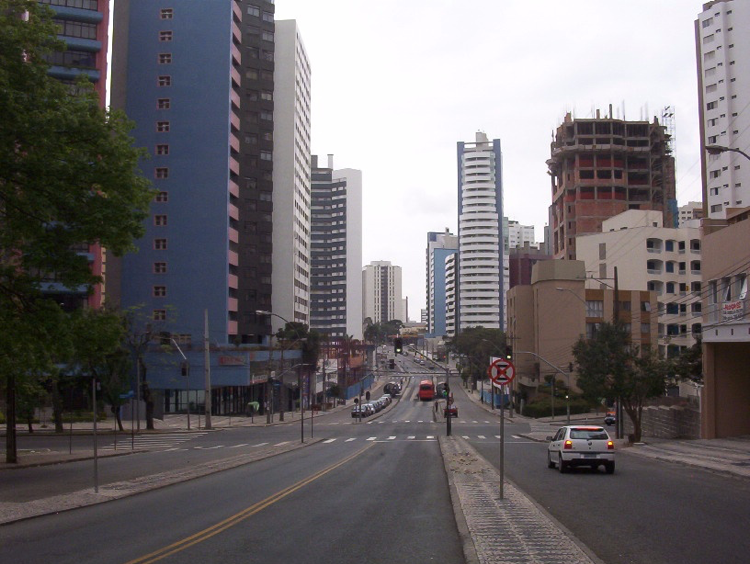
Heavily Developed South Busway: Hong Kong in Parana
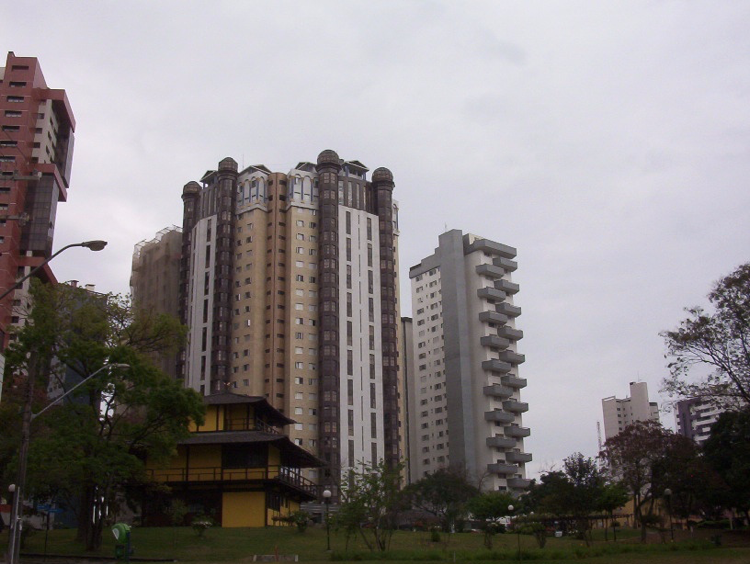
Busway Oriented Development: South Busway
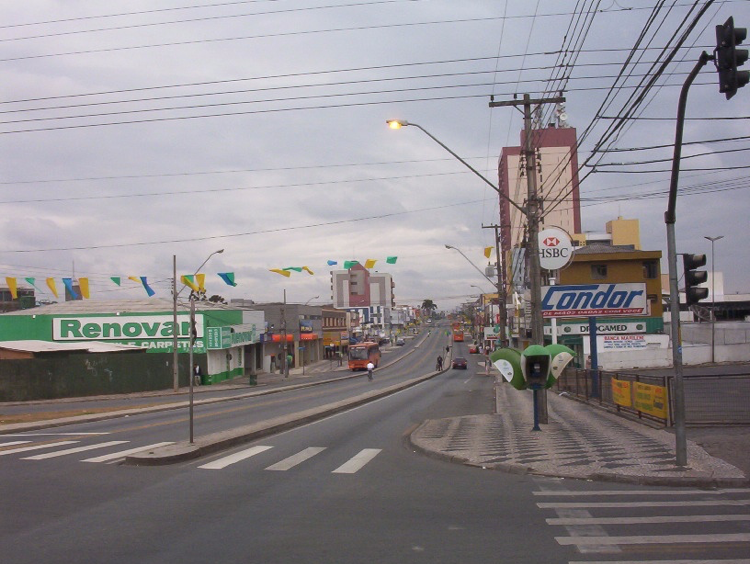
South Busway Beyond High-Rise Development
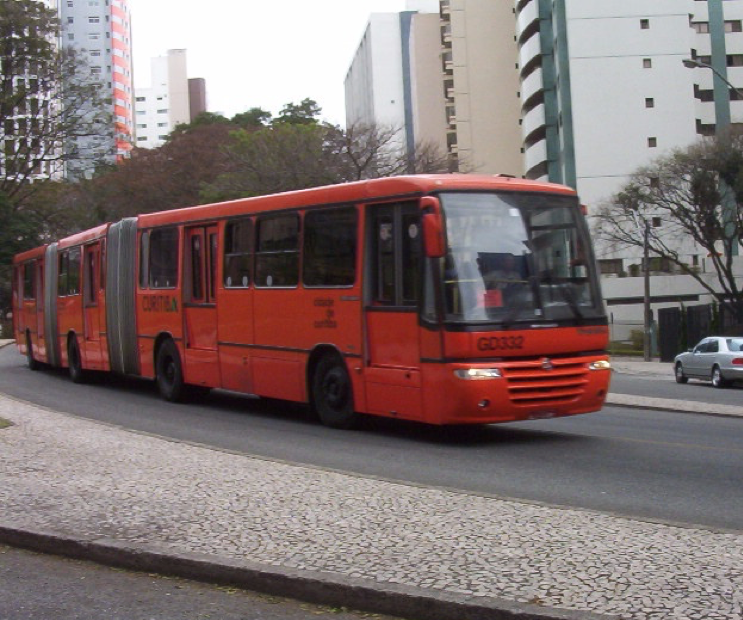
Bi - articulated Bus on South Busway
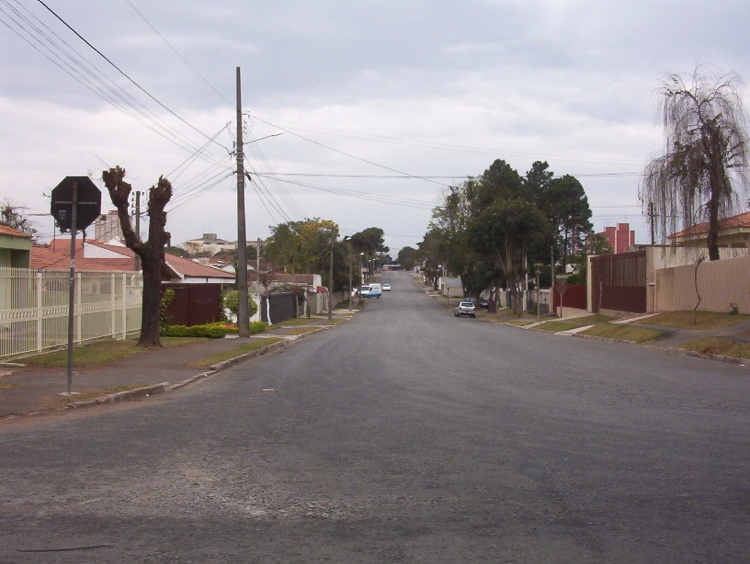
Lower than Los Angeles Densities Off Busways

Suburban Favela (East of City)
Wendell Cox is principal of Demographia, an international public policy firm located in the St. Louis metropolitan area. He is a founding senior fellow at the Urban Reform Institute, Houston, a Senior Fellow with the Frontier Centre for Public Policy in Winnipeg and a member of the Advisory Board of the Center for Demographics and Policy at Chapman University in Orange, California. He has served as a visiting professor at the Conservatoire National des Arts et Metiers in Paris. His principal interests are economics, poverty alleviation, demographics, urban policy and transport. He is co-author of the annual Demographia International Housing Affordability Survey and author of Demographia World Urban Areas.
Mayor Tom Bradley appointed him to three terms on the Los Angeles County Transportation Commission (1977-1985) and Speaker of the House Newt Gingrich appointed him to the Amtrak Reform Council, to complete the unexpired term of New Jersey Governor Christine Todd Whitman (1999-2002). He is author of War on the Dream: How Anti-Sprawl Policy Threatens the Quality of Life and Toward More Prosperous Cities: A Framing Essay on Urban Areas, Transport, Planning and the Dimensions of Sustainability.
Photo: Luiznp via Wikimedia under CC 3.0 License.












